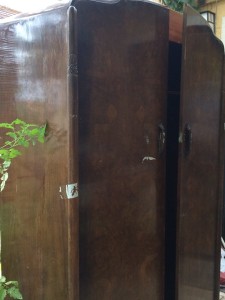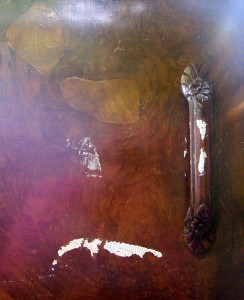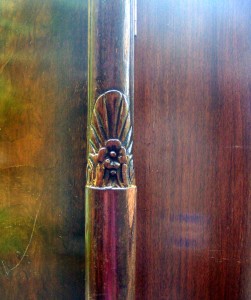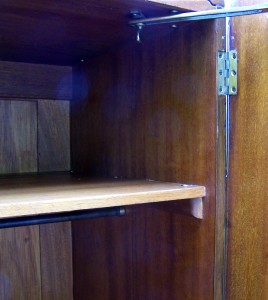This week is designated in our neighborhood for the once a year bulk trash pick-up by the city – that would be everything to big or too heavy to fit into the trash can. Basically, clapped-out appliances, wood-rotted fencing, disintegrating furniture … everything but broken concrete is fair game. Most usually, the piles begin appearing late in the week before; we say jokingly, to give amateur junkers and professional trash pickers a fair go before the city comes in with a number of huge trucks equipped with massive scoopers on the end of a hydraulic arm to scoop up what is left.
The professional junkers usually go for metal debris, everyone else goes for … well, everything else which can be made use of. I know for a fact there are crafters who scrounge weathered fence pickets to make birdhouses and other country craft items. My daughter and I freely admit to collecting perfectly good terra cotta pots, garden ornaments, a huge chiminea, a metal bracket to hang garden flags from, a wooden chaise lounge, plant stands and sometimes plants themselves, but this last Sunday we spotted a real prize, and inveigled a neighborhood friend with a pickup truck to help us. We beat one of the pros to it by about five minutes, and boy, did he look annoyed when he came around the corner and saw us loading it up.
The items in question is one of those tall old-fashioned armoire wardrobes, built for use in the days before houses came with built-in closets – I’d guess this one is from the 1920s, with a veneer inlay on the doors, an arched top, and rounded column-shaped corners with some ornamental carvings on them, and very nice carved wooden doors. There is a small broken part of the molding at the top of one of the doors, damage and cracks to the corners and and the base that it stands on is broken entirely away. There were some broken pieces of wood with it, which
could be part of the base, but maybe not, as they do not seem to fit. There are some small brass fittings – latches, a lock, and hinges coming loose on one door, and a narrow mirror fixed inside one door. The corners are loose, so it doesn’t stand foursquare at all, but that is something that can be fixed with wood-glue and longer screws. It’s otherwise a solid and well-made piece, not a scrap of MDF anywhere in it (although the side panels are plywood) and well within our capabilities to repair, given some advice by our neighbor who does quality wood-working. In one of my books about repairing furniture
, the authors made a point of observing that something from the Forties or even earlier was almost always a solidly built piece of furniture, and well worth the time and effort spent on repairing and restoring, whereas something bought in a furniture store today – unless it was absolutely tippy-top-of-the-line and heinously expensive – is most likely a flimsy piece of trash; thin veneer over MDF. We also recalled the guy on the Antiques Road show, who bought a heavy wooden sideboard from some kids who were going to put it on the Guy Fawkes bonfire, and it turned out to be an incredibly valuable and very rare Jacobean sideboard.
What will we do with it? Probably use it as an entertainment center; with a removable set of shelves for the television and all, until I can afford to build my antique-filled summer vacation house in the Hill Country.




